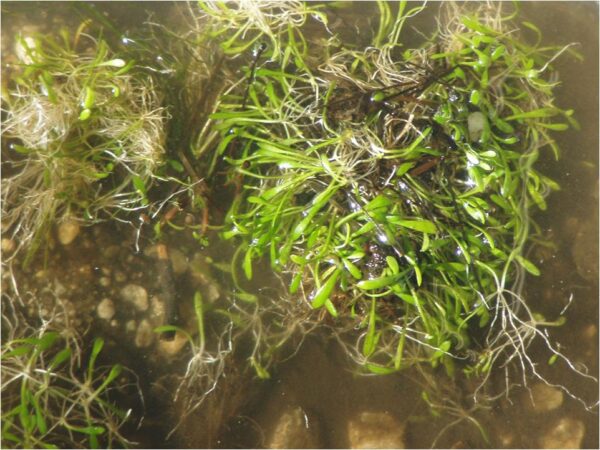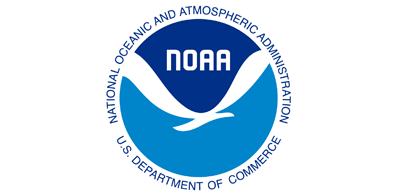
Mudmat
(Glossotigma cleistanthum)
Species at a glance
Mudmat is a relative newcomer to North America, only arriving in 1992. It is a low-growing, mat-forming, invasive aquatic plant that has remained largely under the radar due to its small size and the public’s lack of familiarity with it.
Species Description
Mudmat is characterized by tiny plants, usually less than 2 cm (0.8 in) high. Leaves are bright green, narrow and paired, and resemble tiny green rabbit ears. Mudmat can range in size from 1-4 cm (0.4-1.6 in) long, and its flower color can range from mauve, lilac, blue, and bluish white, to white. Mudmat closely resembles some native mudwort species and can also be confused with emergent leaf forms of some members of the bladderwort family.
Native & Introduced Ranges
Native to Australia, East Africa, India, and New Zealand, Mudmat was not discovered in the United States until 1992 when it was found at a single location in southern Connecticut. It has since spread to several abandoned ponds and quarries in Connecticut, New Jersey, Pennsylvania, and Rhode Island. In Pennsylvania, it has only been found in a handful of eastern counties; however, because of its small size, Mudmat likely has a wider distribution than is currently known.
Biology & Spread
Initial introduction of Mudmat likely occurred by aquarium release, and its subsequent spread may have been mediated by both human activities, such as recreational boating, and by natural means, such as attaching to migrating geese or other waterfowl.
Habitat
Mudmat prefers shallow waters, swamps, and periodically flooded areas along sandy to muddy shorelines with little wave action. Most plants are anchored in the soil (submerged); however, some may float at the water’s surface (emergent). Emergent plants behave as annuals—flowering, fruiting, and then dying back each winter. Submerged plants are hardy perennials, remaining green and growing year-round. Mudmat prefers conditions with low pH, alkalinity, conductivity, and phosphorus levels. In these conditions, and where water clarity is high, Mudmat can grow up to four meters deep.
Impacts
Threat to Biodiversity
Once established, Mudmat can form dense monotypic stands which can be made up of 10,000 to 25,000 individual plants per square meter. These mats form thick carpets, covering the lake bottom from the shoreline to depths often greater than 6.5 ft (2 m). Mudmat spreads very rapidly, covering prime shoreline habitat.
Because of its small size, this invader is not considered a large threat to recreational activites; however, the monoculture formed by this species reduces biodiversity, making it an ecological threat to native plant and animal communities.
Prevention & Control
- Preventing the introduction and spread of the Mudmat is the best way to protect natural habitats from harm.
- Know how to identify and report Mudmat and distinguish it from native mudwort and bladderwort species.
- Always check for and remove plants, mud, and debris from boats, trailers, clothing, and equipment before entering a water body and before leaving a water body.
- Drain all water from bait buckets, bilges, and live wells before transporting to new areas.
- Clean all gear and equipment with hot water (140°F or 40°C) or salt water, OR let boats and equipment dry thoroughly for at least five days before entering a new water body.
References:
- Maine Center for Invasive Aquatic Plants & the Maine Volunteer Lake Monitoring Program. 2007. Maine
- Field Guide to Invasive Aquatic Plants and their common native look alikes.
- United States Geological Survey (USGS) Nonindigenous Aquatic Species Database. 2010. Glossostigma
- cleistanthum fact sheet.
- United States Department of Agriculture—Animal and Plant Health Inspection Service. 1998. Pest Alert:
- Have you seen this plant? It’s mudmat.



